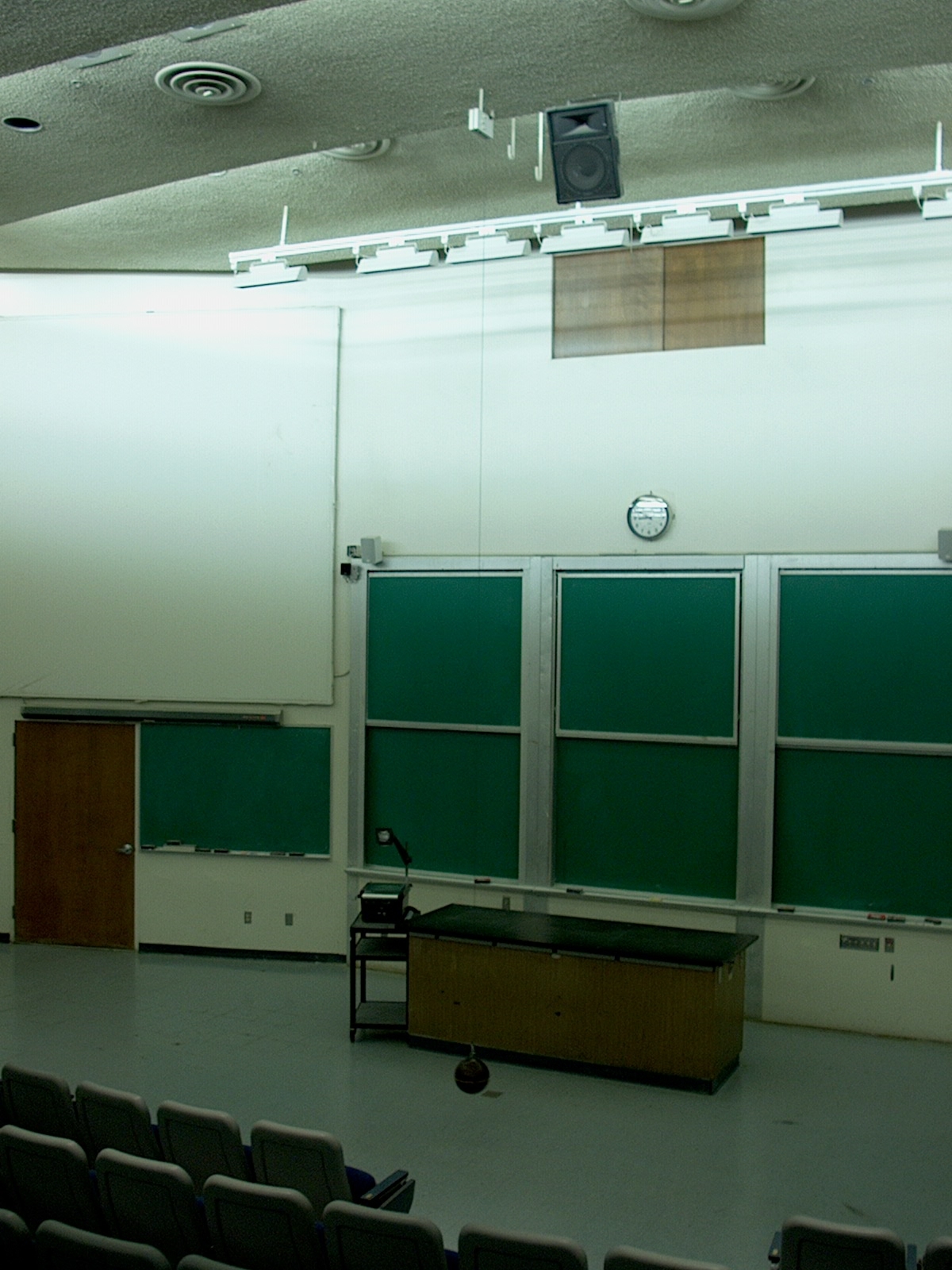

A video of this demonstration is available at this link.
This demonstration is listed under the title “Faith in Physics” in “Demonstrations in Physics” by Julius Sumner Miller (Sydney: Ure Smith, 1969). A bowling ball is suspended by wire rope from the ceiling so that its center is about one foot above the floor. This makes a pendulum about 5.8 m long. (The mass of the bowling ball is 7.3 kg.) These data are for Broida 1610 (in the photograph above). In room 1640, the ball hangs with its center about 14 inches above the floor. The pendulum length is about 4.7 m.
Pull the bowling ball to one side of the lecture hall, to a point where you can stand with it touching your nose (or chin). Now release the bowling ball, which then swings through one period of oscillation to return to your nose (or chin). The point, of course, is to illustrate the conservation of energy. The bowling ball can come back exactly to your nose or chin, but it cannot come back to a point any higher than its starting point, and so cannot strike you.
When you pull the bowling ball aside, it has potential energy U = mgh, where h is the height to which you have raised it above the bottom of its swing. Until you release it, its kinetic energy, K (= (1/2)mv2), equals 0. When you release the bowling ball, gravity accelerates it toward the bottom of its swing. By this point, all of its potential energy has been converted to kinetic energy. K = (1/2)mv2 = mgh, and v = √(2gh). The potential energy is zero, and the kinetic energy is at its maximum (as is v). As the bowling ball continues past the bottom of its swing, its kinetic energy is converted back into potential energy, until the ball reaches the same height from which you had released it. At this point, its kinetic energy is again zero, and its potential energy is again mgh. The bowling ball now begins its swing back toward your nose or chin. Over the entire swing of the bowling ball, the sum of its potential energy and kinetic energy is constant, except for losses due to friction.
The geometry of both 1610 and 1640 is such that there is no way to stand against a wall to perform this demonstration. Some professors enjoy performing it by standing perfectly still at the point from which they release the ball. An alternative that works quite well is to sit in a chair placed where the bowling ball can just reach your nose (or chin). If you sit firmly against the chair back, you will be able to hold your position almost as well as if you were standing against a wall.
CRITICAL NOTE: When performing this demonstration, you must make sure to release the ball without pushing it, and also not to move at all from the starting point.